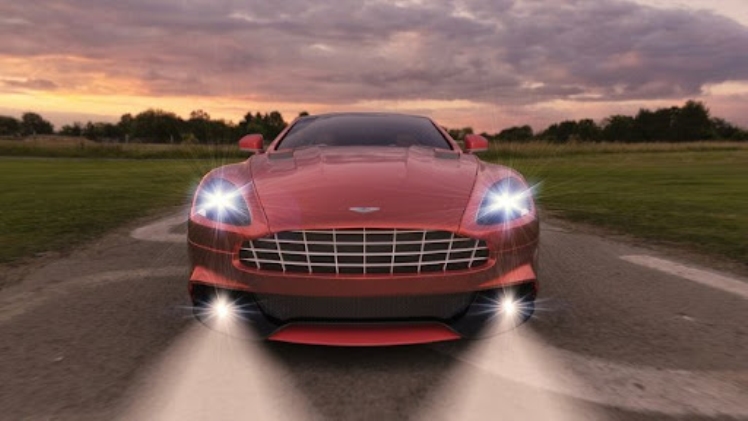Modern automobiles are known for their efficiency, speed, and reliability, making them a great option for long-distance travel. However, anyone who has driven for an extensive period of time can attest to how challenging it is, especially during nighttime, when visibility is reduced. Unsurprisingly, long-distance driving has resulted in numerous accidents, with the World Health Organization (WHO), claiming almost 50 million global injuries due to automotive accidents every year. How to best safeguard against such incidents? By equipping your vehicle with 7 different types of lights, which are not only optimal but necessary.
7 Different Lights Your Vehicle Needs When Driving Long Distances
1. Headlights
Headlights are a staple in every car and manufacturers equip the vehicle with powerful lights right out of the factory. This is why it is a punishable offence almost globally to drive without using headlamps at night. They can illuminate the road in the dark over long distances, allowing the driver to properly assess the way ahead for other vehicles or obstacles. Moreover, the use of headlights isn’t limited to nighttime. They are extremely useful even during the day times the conditions are not very bright or sunny. While using them is non-negotiable, their placement on the front varies for each vehicle.
2. Light Bars
Many factory-manufactured vehicles already have some auxiliary lamps to accompany the headlamps. So if you have at least two of these auxiliary lamps in your vehicle, then a light bar is not vital. In case this provision is unavailable, it’s necessary to install light bars in a vehicle. The main purpose of light bars is to provide additional lighting apart from the main headlights. This becomes particularly useful if you are driving under foggy conditions or at nighttime. Many vehicle owners opt for amber-coloured light bars in foggy conditions as it improves visibility for the driver and also makes the vehicle visible to other motorists.
3. Daytime Running Lights
As mentioned in point one, headlights might be used even during daytime when it is particularly dark or downcast. But how about everyday use when it is bright or sunny outside? Using a strong, high-beam headlight under such conditions can become a major hazard, as the light can temporarily blind drivers coming in the opposite lane, making them more susceptible to accidents. To avoid this, most drivers use daytime running lights. It is a type of light that is strong enough to illuminate objects and roads nearby but it is not bright enough to blind oncoming drivers. These lights are legally acceptable in most countries.
4. Automatic Headlights
In many parts of the world, the weather is constantly in flux. Hence, it can be sunny and bright in one moment, downcast in the other. A driver might experience bright sun, heavy rainfall, snow or fog on a long journey. Therefore, changing lights for each condition can be tiresome. The best solution is installing automatic headlights in your vehicle. These come equipped with sensors that automatically detect the ambient light conditions and adjust the headlights accordingly, ensuring optimal illumination for all types of weather. While it is a novel solution that can make other lights obsolete, the truth is it can be unreliable at times so it’s best to have manual options at hand.
5. Fog Lamps
Depending on geography, dense fog is a huge problem when driving long distances. It really hampers the visibility of the driver and makes it easier to get into collisions or to veer off the road. The worst part is, conventional headlights are not sufficient to drive in foggy conditions as the light is often reflected back from the fog. This is where fog lamps come into the picture. Specially designed for such conditions, the light can pierce through the fog, improving visibility. It also has a low and small illumination angle, meaning only the immediate vicinity of the vehicle is illuminated. Therefore, it will not hinder the vision of other drivers.
6. High Beam Headlights
A feature of the regular headlights used in most vehicles, high-beam headlights enable drivers to see at a greater distance. It throws out a bright, powerful light several meters ahead of the vehicle, helping drivers see far during nighttime or under foggy weather conditions if required. However, while they are useful for the driver, they can be very detrimental to other motorists. As mentioned above, high beams can briefly blind or hinder the vision of other drivers. Hence, it is illegal in many countries to use high beams during the daytime and even during nighttime if there is steady oncoming traffic.
7. Emergency Lights
Lastly, vehicles should also have a lighting system to indicate an emergency or a repair. For this purpose, many vehicles, particularly trucks, opt for emergency lights. These bright lights indicate that a vehicle has stopped on the side of the road and might require assistance. As the name suggests, you should only use them if there is an emergency, as using them while driving can cause confusion among other motorists and lead to accidents.
Emergency lights are a must-have feature in big trucks that travel across long distances, as it lets other drivers know of their presence from quite a distance.
Conclusion
In closing, by installing these 7 different types of lights on your vehicle, you can make your driving experience safer and smoother. After all, long-distance driving can be stressful, exhausting and unpredictable, so it is best to have the right tools at your disposal, and installing these lights is a step in the right direction.
FAQs:
1. What if your headlights are not working properly?
Headlights are one of the primary forms of illumination in a vehicle. Without headlamps, it is very difficult to navigate the roads at night or under foggy weather. Therefore, if the headlights are not working well, then it is advised to get them inspected immediately and not drive at night until the issue is resolved. Since driving without them in the dark is such a major hazard for other motorists, you might also be penalized heavily if you are found driving a car without functioning headlights, tail lights or indicators. Therefore, always inspect these lights regularly to stay safe on the road and out of legal trouble.
2. Which car lights to use during which weather?
In most cases, lighting doesn’t vary according to weather conditions, except in two cases, fog and rain. Here’s how you can navigate better in these conditions:
Fog: Since visibility is poor, use your fog lights to see clearly ahead of you. It’s low angle and powerful illumination will help traverse the roads better.
Rain: There are numerous variables involved here. If you can see up to 100 metres on the road, then it is best to use low-beam headlights. If the visibility is not too great, then you can switch to a high beam so that other vehicles can see you. In case visibility is very poor due to torrential rain, using a fog light is highly recommended, as the visibility is severely comprised.

